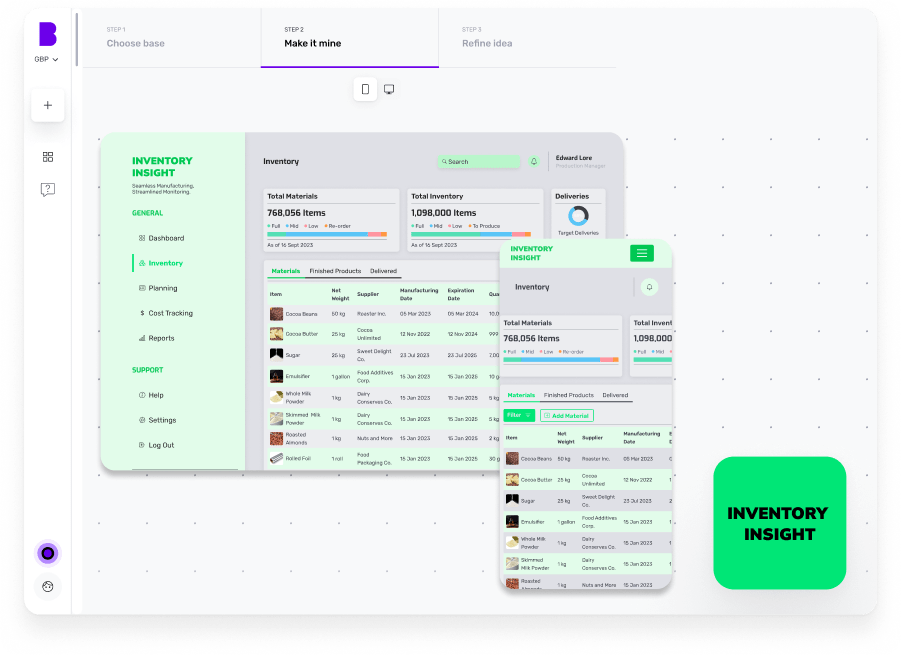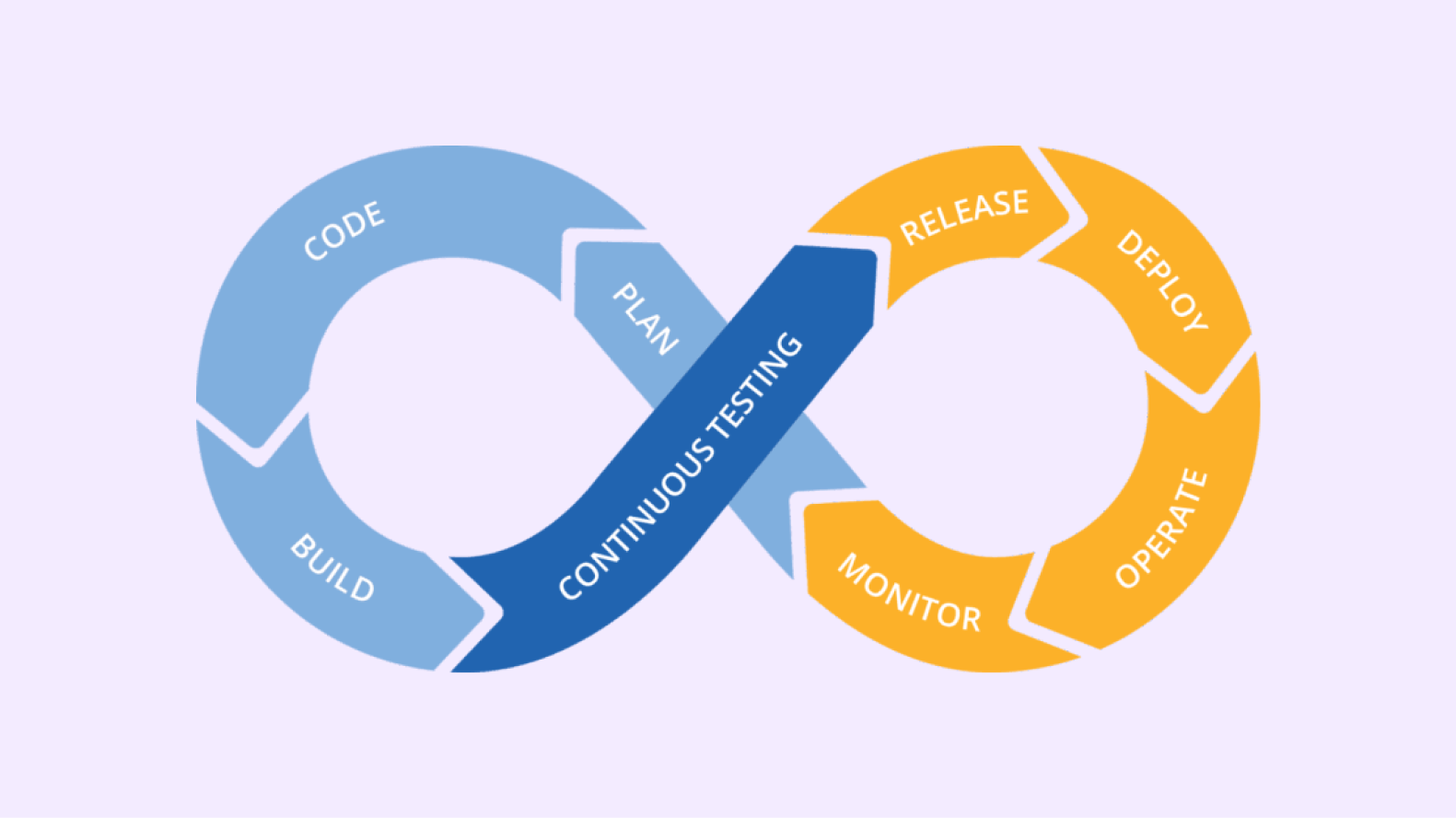Continuous Development is a software development methodology that enables a team to make small, incremental changes to software.
It’s a collaborative process in which automated testing systems allow a group of devs to make quick updates to a piece of software, risk-free. If something goes wrong, it’s easy to find out what.
Exploring Continuous Development methodologies
Continuous Development combines 4 interrelated DevOps processes:
- Continuous Integration
- Continuous Delivery
- Continuous Deployment
- Continuous Testing
Continuous Integration and Deployment are often grouped together as CI/CD and are the most foundational of the four.
Continuous development helps a team to:
- Accelerate development cycles
- Enhance collaboration
- Improve overall software quality
Continuous Development is related to the Agile methodology that has found favour amongst software developers this century. The success of Agile and Continuous Development is well-earned. Comparing it to what it replaced helps us understand what makes it a winning formula.
Contextualising Continuous Development
Before, companies would infrequently deliver large software updates that were developed under the “Waterfall” development methodology.
Waterfall was originally the methodology used to manufacture cars, which explains certain critical elements of it. Waterfall requires reams of documentation to be written before work can begin.
That makes sense for cars — it’s hard to modify car parts on the fly — but for software? Not so much. Software is much more flexible and adaptable.
But despite that, Waterfall was the main development approach from the early days of software until the early 00s. The result was customers often struggled with buggy or insecure software for longer than ideal. It could take several years to ship the new code.
The Agile Manifesto, published in 2001, was a response to changing conditions in the software landscape. The dotcom boom gave opportunities to small, distributed and nimble teams that could build game-changing software quickly.
Agile stresses collaboration and the ability to manage change over rigid management practices. It’s a mindset as much as a methodology.
It’s Agile that Continuous Development is inspired by.
Key Components of Continuous Development
Continuous development comprises 4 related elements: Continuous Integration, Continuous Delivery, Continuous Deployment and Continuous Testing. Let’s discuss what each means in turn.
Continuous integration
Continuous integration is a way of managing the potential for bugs to creep into code when multiple developers are making regular contributions to the code base. Each member of a team merges their changes into an integration branch, which is then tested via an automated process to test integration issues and merged into the source code each day (or more).
Continuous delivery
Continuous delivery builds on CI by ensuring that the software can be released to production at any time. After the code is integrated and passes all automated tests, it's automatically prepared and packaged for deployment.
Continuous deployment
Continuous deployment aims to automate the entire release process, deploying every code change that passes the automated tests directly to production.
Continuous testing
Continuous testing is the process of executing automated tests, such as unit tests, integration tests, system tests and performance tests, as part of the software delivery pipeline.
Real-time feedback and collaboration
Continuous development is all about maintaining quality and forward momentum. Real-time feedback facilitates these by ensuring the team knows when an error arises. Continuous development also relies on a collaborative team dynamic.
Advantages of continuous development practices
Now that we’ve touched on what each element of continuous testing does, let’s move on to the advantages they confer.
David Farley, in Continuous Delivery: Reliable Software Releases through Build, Test, and Deployment Automation, sums it up well. He writes,
“The aim of the deployment pipeline is threefold. First, it makes every part of building, deploying, testing, and releasing software visible to everybody involved, aiding collaboration.
“Second, it improves feedback so that problems are identified and so resolved, as early in the process as possible.
“Finally, it enables teams to deploy and release any version of their software to any environment at will through a fully automated process.”
Each of the four elements of Continuous Development confers a different advantage:
Continuous integration - if the code breaks, it’s easy to spot which merge caused the problem.
Continuous delivery - ensures the software is always in a deployable state, and the release process is streamlined and can be performed on demand with minimal manual effort.
Continuous deployment - enables a continuous flow of changes into production, allowing for rapid and frequent updates to the software.
Continuous testing - guarantees that the software is of high quality and defect-free.
Continuous Development practices reduce human error and accelerate delivery, so new features, fixes and improvements are available faster. Users of software experience a steady stream of enhancements and fewer disruptions. These build trust and keep a piece of software competitive in the marketplace.
Addressing Challenges in Continuous Development
Like all highly technical processes, Continuous Development presents technical and inter-personal challenges.
Weak testing protocols
Continuous development depends on the reliability and quality of its automated testing. Poor testing practices that result in failures for unknown reasons are known as “flaky tests”. When a team loses trust in its testing systems, the continuous development process breaks down. All failures, including false positives and false negatives, need to be investigated fully, slowing down the process immensely.
Flaky tests can result from poorly maintained or designed test suites.
Mitigation techniques:
- Review test cases
- Maintain clean test suites
- Refactor brittle tests
- Choose the right tools
- Use a Continuous Integration server that can detect flaky tests
Version control conflicts
Continuous development hinges on the effective management of the merging of multiple branches. Problems can arise from when modifications from different branches are integrated, causing clashes that cause build failures and hinder the progress of work. Failure to address this issue can lead to redundant work, heightened technical burden and prolonged development timelines.
Mitigation techniques:
- Establish robust branching strategies to define how and when to create, name and merge branches
- Make use of automated merge checks
Culture and process challenges
Success in Continuous Development is as much a human challenge as a technical one. A team that has not embraced the culture of collaboration, transparency and continual improvement will struggle to nail the technical side of Continuous Development. Teams that struggle with communication may suffer from delayed releases, misaligned priorities and low morale.
Mitigation techniques:
- Implement culture change initiatives such as workshops and training sessions
- Encourage a culture of openness and regular communication
- Leverage tools and dashboards for aligned on shared objectives
- Align goals with Continuous Development principles
Limited environment challenges
Software development teams may have to work around limited infrastructure resources for code testing purposes. In these cases, teams might deploy a shared testing environment.
Shared testing environments can result in too many users simultaneously committing code to the same Continuous Integration environment. If different tests need different environment configurations, environment configuration issues can result.
Poor configuration can produce failed tests and failed deployments; this defeats the point of Continuous Development by preventing a fast-moving, agile and iterative approach.
Mitigation techniques:
- On-demand cloud-based testing environments
Security challenges
Security in Continuous Development presents several challenges. As the backbone of many companies’ software development, it can be a target for cyber criminals. One notable cyber attack on a Continuous Development pipeline occurred in 2020, when US IT infrastructure provider SolarWinds took 14 months to discover its pipeline had been compromised by attackers.
Mitigation techniques:
- Implement flow controls like reviews and approvals so that attackers can’t push malicious code down the pipeline
- In access management, put in place the principle of least privilege
- Giving too much access to third-party plugins can let attackers push malicious code
Technological tools enabling continuous development
Key tools that facilitate continuous development practices
Continuous development thrives on a robust ecosystem of tools that streamline coding, testing and deployment.
- Version control systems like Git keep teams in sync, ensuring changes are tracked and managed effectively.
- Continuous Development platforms, such as Jenkins, GitHub Actions and CircleCI, automate the build, test and deployment pipeline, slashing manual effort and reducing errors.
- Docker and Kubernetes make containerisation and orchestration seamless, allowing applications to run consistently across different environments.
- Testing tools, including Selenium and JUnit, ensure code quality with automated checks at every stage.
- Monitoring and observability solutions like Prometheus and Grafana help catch issues in production early, enabling faster fixes. These tools, working in harmony, form the backbone of modern continuous development practices, empowering teams to deliver better software faster.
Understanding CI/CD and its integration into workflows
CI/CD, or Continuous Integration and Continuous Deployment, is the engine of agile software development. Continuous Integration ensures that every code change is automatically built and tested, catching bugs early and keeping the main branch stable. Continuous Deployment takes it a step further, automating the release process so that new features can reach users quickly and reliably.
By integrating CI/CD into workflows, teams break the cycle of manual testing and deployment, fostering a culture of collaboration and rapid iteration. Developers can focus on writing quality code, knowing that automated pipelines will handle repetitive tasks. With CI/CD, feedback loops tighten — issues are spotted sooner, and updates happen faster. It’s not just about technology; it’s a mindset shift, embracing automation and teamwork to deliver value continuously.
Emerging technologies that shape the future of continuous development
The future of Continuous Development is bright, driven by emerging technologies that push the boundaries of efficiency and innovation.
AI-powered tools are revolutionising testing, using Machine Learning to predict defects and optimise workflows. GitOps is gaining traction, integrating version control systems directly with infrastructure management for seamless deployments. Serverless computing is changing the way applications are developed, with platforms like AWS Lambda enabling faster, more cost-effective delivery. Edge computing ensures low-latency performance, crucial for IoT and real-time applications.
Conclusion
Continuous Development and CI/CD are foundational to modern software development, and any software developer worth their salt will be well-versed in them.
We integrate Continuous Development into our composable software platform to help businesses become more agile, flexible and scalable.
FAQ
What is Continuous Development?
Continuous Development is a software approach where updates are built, tested and delivered frequently and automatically. It emphasises automation, collaboration and speed, enabling teams to release new features or fixes seamlessly and consistently.
What are the key principles of Continuous Development?
The key principles include automation, collaboration, iterative delivery, continuous feedback and robust testing. These result in quality, speed and adaptability, enabled by a culture of continuous improvement.
How does Continuous Development differ from traditional development methods?
Traditional methods rely on large, infrequent updates, often resulting in delays and bugs. Continuous development delivers smaller, regular changes, reducing risks, improving quality and responding faster to user needs.
What are the advantages of adopting Continuous Development practices?
Continuous development boosts efficiency, reduces errors, accelerates delivery and enhances user satisfaction. Teams can come up with new ideas faster, fix problems quickly and stay ahead of their competitors.
What is the difference between CI/CD and DevOps?
CI/CD focuses on automating the build, test and deployment pipeline. DevOps is broader, combining culture, tools and processes to enhance collaboration and delivery across the entire software lifecycle.
What is CI in DevOps?
CI, or Continuous Integration, is the practice of merging code changes frequently into a shared repository, automating builds and tests to catch issues early and ensure stability.
Create robust custom software today
100s of businesses trust us to help them scale.
Book a demoBy proceeding you agree to Builder.ai’s privacy policy
and terms and conditions

Stories published by the editorial team at Builder.ai.










 Facebook
Facebook X
X LinkedIn
LinkedIn YouTube
YouTube Instagram
Instagram RSS
RSS


